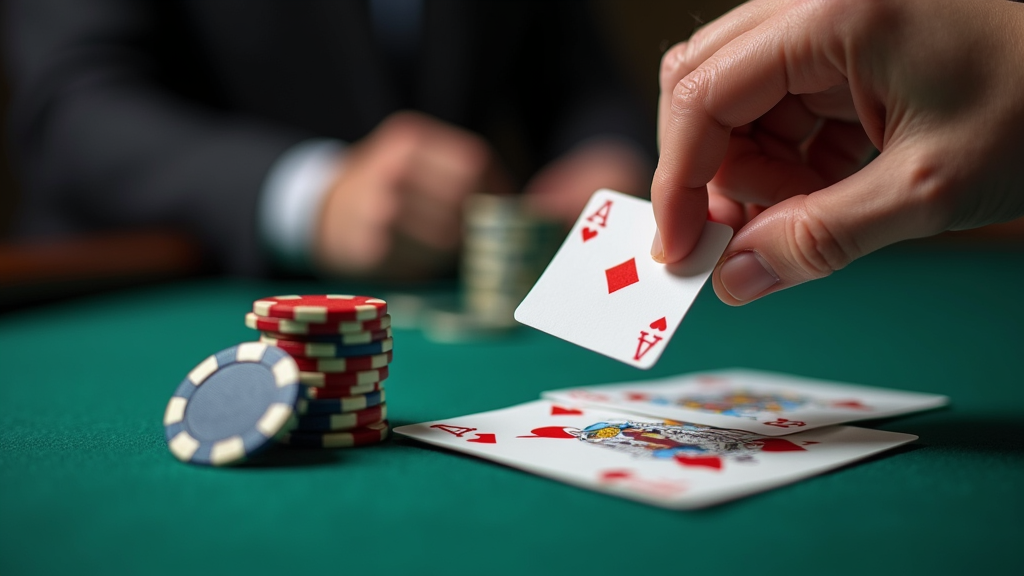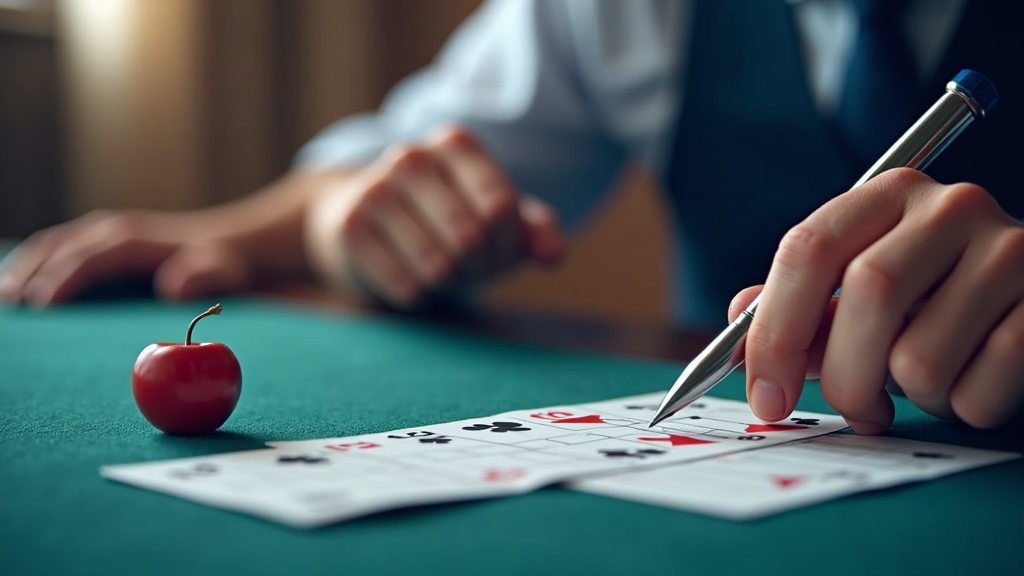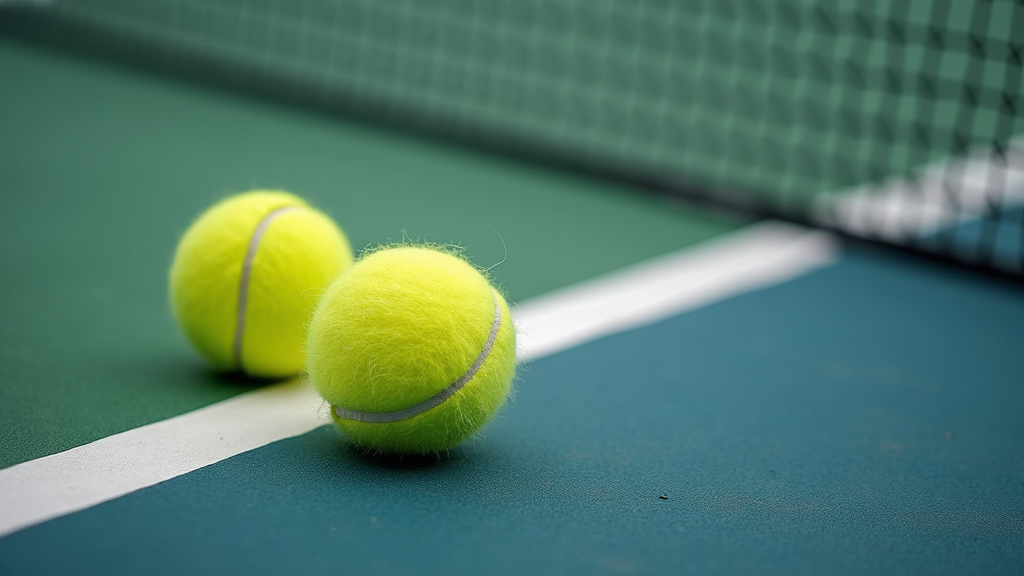Table of Contents
- Introduction
- Doubles Strategy: Mastering Team Play
- Doubles Strategy: Detailed Guide
- Singles Strategy: Dominating the Court
- Singles Strategy: Detailed Guide
- Conclusion
Introduction

Overview and Importance
Pickleball strategy is absolutely crucial for achieving success, whether you’re playing singles or doubles. It’s not just about hitting the ball; it’s about hitting it with purpose and intention. Mastering effective strategies and techniques can significantly improve your win rate and elevate your overall game.
Consider these key statistics: strategic serve placement alone can increase your winning percentage by as much as 30%. Furthermore, improved shot selection can decrease your error rate by 20%. These numbers highlight the tangible benefits of a well-thought-out approach to the game.
Why does all of this matter? Because in the competitive world of pickleball, a solid strategy provides a distinct competitive edge. It allows you to control the flow of the game, exploit your opponent’s weaknesses, and maximize your strengths. Beyond just winning, understanding and implementing effective strategies enhances your overall gameplay experience, making each match more engaging and rewarding.
Background
Pickleball has a fascinating history, originating in 1965 on Bainbridge Island, Washington. What began as a simple recreational game created to entertain bored children has blossomed into a globally recognized and rapidly growing competitive sport.
Initially played with makeshift equipment and simple rules, pickleball has undergone a significant transformation. The recent surge in popularity has led to the development of professional leagues, sanctioned tournaments, and a much greater emphasis on strategic gameplay and advanced techniques. Players are no longer just hitting the ball back and forth; they are actively analyzing their opponents, planning their shots, and employing sophisticated strategies to gain an advantage.
What You’ll Learn
In the following sections, you’ll delve into the core concepts that underpin successful pickleball strategy. We’ll cover everything from effective serve placement and return strategies to optimal court positioning and movement techniques. You’ll learn how to make smart shot selections and how to communicate effectively with your partner in doubles play.
The goal is to provide you with practical applications that you can immediately implement to improve your game, regardless of whether you’re playing singles or doubles. By mastering these strategies, you’ll gain a competitive advantage over your opponents, allowing you to play smarter, more effectively, and with greater confidence.
Doubles Strategy: Mastering Team Play
Fundamental Concepts
Doubles pickleball is a dynamic game that demands more than just individual skill. It’s a dance of coordination, communication, and strategic thinking. To truly excel, understanding the fundamental concepts is crucial. Let’s delve into the key definitions and core principles that form the bedrock of successful doubles play.
Before diving deeper, let’s clarify some key terms:
- Dinking:This involves hitting soft, controlled shots that land just over the net and within the Non-Volley Zone, also known as the Kitchen. Dinking is a patient game, aimed at forcing errors or creating opportunities for attack.
- Volley:A volley is when you hit the ball in the air before it bounces. Mastering volleys is essential for controlling the net and putting pressure on your opponents.
- Third Shot Drop:Typically executed after the serve and return, the third shot drop is a soft, arcing shot intended to land in the Kitchen, allowing the serving team to approach the net and gain a strategic advantage.
With these definitions in mind, let’s explore the core principles that guide effective doubles play:
- Communication and teamwork:Doubles is inherently a team sport. Constant communication, clear signals, and mutual support are paramount. Discuss strategy, call out shots, and encourage your partner.
- Strategic court coverage:Understanding how to divide the court and move in tandem with your partner is essential. Effective court coverage prevents gaps and ensures that no ball goes unreturned.
- Capitalizing on opponents’ weaknesses:Observe your opponents carefully. Identify their weaker shots, preferred playing style, and any tendencies they may have. Exploit these weaknesses to gain an advantage.
Essential Components
Building upon the fundamental concepts, mastering doubles requires a keen understanding of its essential components. These elements, both tangible and intangible, contribute significantly to a team’s overall performance.
Let’s first consider the required elements for a successful doubles partnership:
- Clear communication between partners:This cannot be overstated. From calling out shots to signaling strategic shifts, constant and clear communication is vital for seamless coordination.
- Understanding of each other’s strengths and weaknesses:Knowing your partner’s capabilities allows you to complement each other effectively. Cover their weaknesses and leverage their strengths to maximize your team’s potential.
- Coordinated movement and court positioning:Moving as a unit, anticipating your partner’s movements, and maintaining optimal court positioning are essential for effective coverage and offensive opportunities.
Now, let’s examine the key features that contribute to a winning doubles strategy:
- Primary Aspects:
- Secondary Aspects:
- Important Variations:
- Serve and return strategies:A well-placed serve can immediately put pressure on the opposing team. Similarly, a strategic return can disrupt their momentum and set up your team for success.
- Dinking and volleying techniques:Mastering these skills is crucial for controlling the net and dictating the pace of the game. Effective dinking forces errors, while aggressive volleying puts opponents on the defensive.
- Third shot drop execution:A well-executed third shot drop is the cornerstone of transitioning to the net. Practice this shot relentlessly to ensure consistent accuracy and optimal placement.
- Anticipating opponents’ shots:Reading your opponents’ body language, anticipating their shot selection, and positioning yourself accordingly can give you a crucial edge.
- Adjusting strategy based on game situation:Be prepared to adapt your strategy based on the score, your opponents’ performance, and the overall flow of the game. Flexibility is key.
- Maintaining a positive and supportive attitude:Doubles is as much a mental game as it is a physical one. A positive attitude, encouragement, and mutual support can help you overcome challenges and maintain momentum.
- Switching positions based on shot placement:Be prepared to switch sides of the court seamlessly based on the direction of the ball and your team’s strategic needs.
- Adjusting strategy based on opponent’s style of play:Some opponents prefer aggressive play, while others favor a more defensive approach. Tailor your strategy to counter their specific style and exploit their weaknesses.
Doubles Strategy: Detailed Guide

Preparation
Effective doubles play in pickleball requires careful preparation, both before you step onto the court and during the initial moments of the game. Proper preparation sets the stage for success and minimizes the risk of errors or injuries.
- Required materials:
- Pickleball paddle with a grip size suited to your hand (typically 4-4.5 inches in circumference).
- Appropriate athletic shoes for court movement.
- Comfortable athletic wear.
Before beginning, ensure you have the right equipment. Your pickleball paddle should fit comfortably in your hand, typically with a grip size between 4 and 4.5 inches in circumference. Wear appropriate athletic shoes that provide good traction and support for quick movements on the court. Comfortable athletic wear will allow you to move freely and stay focused on the game.
- Initial setup:
- Warm-up exercises to prevent injury.
- Communication with your partner to establish strategy.
Begin with warm-up exercises to prevent injuries and prepare your muscles for the game. Light cardio, stretching, and some practice swings can make a big difference. Communication with your partner is crucial. Discuss your game plan, preferred positions, and any specific strategies you want to employ. A clear understanding between partners from the start can prevent confusion and improve teamwork.
- Important considerations:
- Understanding court positioning and coverage.
- Identifying opponents’ weaknesses.
Understanding court positioning and coverage is essential. Know where you and your partner should be on the court at different stages of the game. Identifying your opponents’ weaknesses is another key aspect of preparation. Observe their play during warm-up or previous games to spot areas you can exploit. Do they have a weaker backhand? Are they less mobile? Use this information to your advantage.
Step-by-Step Process
Executing a successful doubles strategy involves a series of coordinated steps. Here’s a breakdown of the key actions and best practices to follow during a game:
- Clear instructions:
Serving deep and targeting your opponents’ backhands can immediately put them on the defensive. When returning serves, aim deep as well to disrupt their ability to hit aggressive drives. Experiment with backspin on your returns to control the pace and placement of the ball. Maintain consistent footwork and a balanced stance throughout the game, bending your knees to stay agile. Focus intently on the ball as it makes contact with your paddle to improve accuracy. Always be in a ready position, with your feet shoulder-width apart, ready to react. Make decisive shot choices and commit to them fully. Capitalize on your strengths and target your opponents’ weaknesses to gain a strategic advantage. Practice patience and choose your shots wisely, playing conservatively when necessary. Keeping the ball low is crucial for controlling the game; adjust your paddle angle accordingly. Constant communication with your partner will improve your teamwork and coordination. Let out balls pass if they are going out, preventing your opponents from staying in the rally. Dinking crosscourt can increase accuracy and create advantageous angles. When in doubt, target the middle of the court to minimize errors.
- Best practices:
- Consistent communication with your partner.
- Strategic shot placement to exploit weaknesses.
- Maintaining a low center of gravity for better balance.
Consistent communication is key to a successful partnership. Discuss every point, adjust your strategy as needed, and support each other. Strategic shot placement involves identifying and exploiting your opponents’ weaknesses. This could mean targeting their backhands, hitting to open spaces, or using drop shots to bring them to the net. Maintaining a low center of gravity will improve your balance, agility, and ability to react quickly to shots.
- Common mistakes to avoid:
- Overhitting the ball.
- Poor communication with your partner.
- Neglecting court positioning.
Avoid overhitting the ball, which often leads to unforced errors. Focus on control and placement instead. Poor communication with your partner can lead to confusion and missed opportunities. Make sure to talk openly and frequently. Neglecting proper court positioning can leave gaps for your opponents to exploit. Always be aware of where you and your partner should be on the court.
Advanced Techniques
To elevate your doubles game, consider incorporating advanced techniques that can give you a competitive edge. These strategies require practice and a deep understanding of the game.
- Expert tips:
- Varying serve placement to keep opponents guessing.
- Using deception to mislead opponents.
- Anticipating opponents’ shots based on their body language.
Varying your serve placement can keep your opponents guessing and prevent them from anticipating your shots. Mix up deep serves with short serves, and target different areas of the court. Deception involves using subtle cues to mislead your opponents about the direction or type of shot you’re going to hit. This could include changing your grip, stance, or swing at the last moment. Pay close attention to your opponents’ body language to anticipate their shots. Their stance, grip, and the way they move can provide valuable clues about where they’re going to hit the ball.
- Optimization methods:
- Analyzing game footage to identify areas for improvement.
- Practicing specific drills to enhance skills.
- Adjusting strategy based on opponents’ tendencies.
Analyzing game footage can help you identify areas for improvement. Watch your games and look for patterns in your play, such as common errors or missed opportunities. Practice specific drills to enhance your skills. Focus on areas where you need improvement, such as dinking, volleys, or serves. Adjust your strategy based on your opponents’ tendencies. If they struggle with drop shots, use them more frequently. If they have a strong forehand, try to force them to use their backhand.
- Troubleshooting:
- Addressing communication breakdowns with your partner.
- Overcoming mental blocks and maintaining focus.
- Adapting to changing game conditions.
Address any communication breakdowns with your partner immediately. Talk openly and honestly about what’s working and what’s not. Overcome mental blocks by staying positive and focusing on the present moment. Avoid dwelling on past mistakes and concentrate on the next point. Be prepared to adapt to changing game conditions, such as wind, sun, or different court surfaces. Adjust your strategy and shot selection accordingly.
Singles Strategy: Dominating the Court
Fundamental Concepts
To truly excel in singles pickleball, understanding the fundamental concepts is crucial. It’s more than just hitting the ball; it’s about court awareness, strategic thinking, and consistent execution.
Let’s clarify some key definitions to ensure we’re all on the same page:
- Baseline: This is the line at the back of the court. It marks the boundary for serving and is a key reference point for deep shots.
- Non-Volley Zone Line: Also known as the “kitchen line,” this is the line 7 feet from the net. Players cannot volley the ball while standing within this zone.
- “T”: This refers to the intersection of the center service line and the baseline, a common area to aim for when serving.
Beyond these definitions, several core principles will guide your singles strategy:
- Controlling the center of the court: Positioning yourself in the center allows you to cover more ground and react quickly to your opponent’s shots.
- Maintaining a deep serve and return: Deep shots force your opponent back, giving you more time to react and potentially setting up advantageous shots.
- Forcing opponent errors through strategic shot placement: Aim for your opponent’s weaker side, force them to move, and create opportunities for errors.
Essential Components
Mastering singles pickleball requires a blend of skill, strategy, and stamina. Several essential components contribute to a winning game.
Here are the required elements to build a solid foundation:
- Strong serving and returning skills: A consistent and accurate serve puts pressure on your opponent from the start. A solid return neutralizes their advantage and sets you up for success.
- Excellent footwork and stamina: Singles pickleball demands constant movement. Quick feet and the ability to maintain energy throughout the match are crucial.
- Strategic shot placement: Knowing where to place your shots to exploit your opponent’s weaknesses is a game-changer.
Let’s delve into the key features to consider, breaking them down into primary, secondary, and variations:
Primary aspects:
- Deep serves and returns: As mentioned earlier, depth is key. Aiming for the baseline on serves and returns pushes your opponent back and limits their options.
- Strategic shot placement to exploit weaknesses: Identify your opponent’s weaker side (backhand is common) and target it consistently. Also, look for opportunities to hit behind them as they move.
- Movement to the Non-Volley Zone Line to control the net: Once you have the opportunity, move forward to the Non-Volley Zone Line to control the net and put pressure on your opponent.
Secondary aspects:
- Adjusting strategy based on opponent’s style of play: Are they aggressive net players or do they prefer to stay back? Adapt your strategy accordingly.
- Maintaining mental focus and avoiding errors: Singles can be mentally taxing. Stay focused, minimize unforced errors, and remain patient.
Important variations:
- Varying serve placement to keep opponents guessing: Don’t become predictable. Mix up your serve placement to keep your opponent off balance. Serve deep, short, wide, and at the body.
- Using momentum to play shots in the opposite direction: If your opponent is leaning one way, use their momentum against them by hitting the ball to the opposite side of the court. This can create easy scoring opportunities.
Singles Strategy: Detailed Guide

Preparation
Proper preparation is crucial for success in singles pickleball. It sets the foundation for effective gameplay and minimizes the risk of injury. This section outlines the essential steps and considerations to ensure you’re fully prepared before stepping onto the court.
- Required materials:
- High-quality pickleball paddle (7.5 – 8.5 ounces): A well-balanced paddle within this weight range offers a good blend of power and control, essential for singles play.
- Comfortable and supportive athletic shoes: Proper footwear is vital for quick movements and preventing injuries. Look for shoes with good lateral support and cushioning.
- Moisture-wicking athletic wear: Stay comfortable and dry during intense matches with clothing that wicks away sweat.
Before starting your match, it’s important to set yourself up for success. A little preparation can go a long way in optimizing your performance.
- Initial setup:
- Warm-up exercises to improve flexibility and prevent injury (5-10 minutes): Dynamic stretching and light cardio, such as jogging and arm circles, will prepare your muscles for the demands of the game.
- Mental preparation to focus on strategy and execution: Take a few moments to visualize successful plays and mentally rehearse your game plan. Focus on staying calm and confident.
Singles pickleball is as much a mental game as it is a physical one. Understanding your opponent is key to forming an effective strategy.
- Important considerations:
- Assessing your opponent’s strengths and weaknesses: Observe your opponent’s play style, shot preferences, and movement patterns during warm-up. Identify areas you can exploit.
- Planning your initial strategy based on the opponent’s tendencies: Develop a game plan based on your assessment. Decide which shots to use, where to place them, and how to react to different situations.
Step-by-Step Process
Executing a well-thought-out strategy is vital for singles pickleball. This section provides a step-by-step guide to optimize your gameplay and increase your chances of success. Follow these clear instructions to gain an edge over your opponent.
- Clear instructions:
To make the most of your strategy, it’s important to follow certain best practices. These habits will help you maintain consistency and effectiveness throughout the game.
- Best practices:
- Consistently serving deep and accurately: A reliable serve sets the tone for the point and puts pressure on your opponent.
- Strategically placing shots to exploit weaknesses: Target your opponent’s backhand, force them to move, and create opportunities for winning shots.
- Maintaining a strong mental game and avoiding errors: Stay focused, positive, and disciplined to minimize unforced errors and capitalize on your opponent’s mistakes.
Even with a solid strategy, it’s easy to fall into common traps. Avoiding these mistakes can make a significant difference in your performance.
- Common mistakes to avoid:
- Serving short or inconsistently: This allows your opponent to attack and gain control of the point.
- Failing to move to the Non-Volley Zone Line: Staying back gives your opponent more angles and time to react.
- Making unforced errors due to poor shot selection: Choose your shots wisely and avoid unnecessary risks.
Advanced Techniques
Mastering advanced techniques can elevate your singles game to the next level. This section provides expert tips, optimization methods, and troubleshooting strategies to help you refine your skills and gain a competitive edge.
- Expert tips:
- Varying serve placement to keep opponents guessing: Mix up your serve location, spin, and speed to disrupt your opponent’s rhythm and prevent them from anticipating your serves.
- Using deception to mislead opponents: Disguise your shots with subtle changes in your body language and paddle angle to throw off your opponent’s timing and positioning.
- Anticipating opponents’ shots based on their body language: Pay attention to your opponent’s stance, grip, and movement patterns to predict their shots and react accordingly.
To truly excel, you need to continuously optimize your approach. These methods will help you identify areas for improvement and fine-tune your strategy.
- Optimization methods:
- Analyzing game footage to identify areas for improvement: Review your matches to identify patterns, weaknesses, and opportunities for improvement.
- Practicing specific drills to enhance skills: Focus on drills that target your weaknesses and reinforce your strengths.
- Adjusting strategy based on opponents’ tendencies: Adapt your game plan based on your opponent’s strengths, weaknesses, and changing tactics.
Even the best players face challenges. Knowing how to troubleshoot common issues can help you stay competitive even when things get tough.
- Troubleshooting:
- Overcoming mental blocks and maintaining focus: Use visualization, positive self-talk, and deep breathing to stay calm and focused under pressure.
- Adapting to changing game conditions: Adjust your strategy based on factors such as wind, sun, and court surface.
- Addressing fatigue and maintaining stamina: Stay hydrated, pace yourself, and use strategic timeouts to conserve energy.
Conclusion
Summary of Key Strategies
Throughout this guide, we’ve explored a range of strategies designed to elevate your pickleball game, whether you’re playing singles or doubles. For singles, remember the power of strategic shot placement, dictating the pace of the game, and maintaining a strong court presence. Focus on exploiting your opponent’s weaknesses and controlling the center line to maximize your advantage. In doubles, the key lies in teamwork and coordination. Effective communication is paramount for seamless court coverage and anticipating your opponent’s moves. Master the art of the soft game at the non-volley zone, and practice your cross-court dinks to control the pace and set up offensive opportunities. Remember to transition smoothly between offense and defense, and always be ready to adapt your strategy based on the flow of the game.
Regardless of whether you’re playing singles or doubles, consistent practice is essential for improving your skills and solidifying your strategic understanding. Don’t underestimate the importance of physical conditioning; pickleball demands agility, endurance, and quick reflexes. A well-rounded training regimen will not only enhance your performance but also reduce the risk of injuries.
Final Thoughts and Recommendations
Pickleball is a dynamic and rewarding sport that offers endless opportunities for growth and improvement. The strategies outlined in this guide provide a solid foundation for success, but the true key lies in consistent practice and a willingness to learn. Take the time to refine your skills, experiment with different techniques, and analyze your game to identify areas for improvement.
To further enhance your knowledge and development, consider exploring additional resources such as online tutorials, coaching sessions, and competitive play. Joining a local pickleball club or participating in tournaments can provide valuable experience and expose you to different playing styles and strategies. Most importantly, remember to have fun and enjoy the journey of becoming a better pickleball player. Embrace the challenges, celebrate your successes, and continue to strive for excellence on the court.

